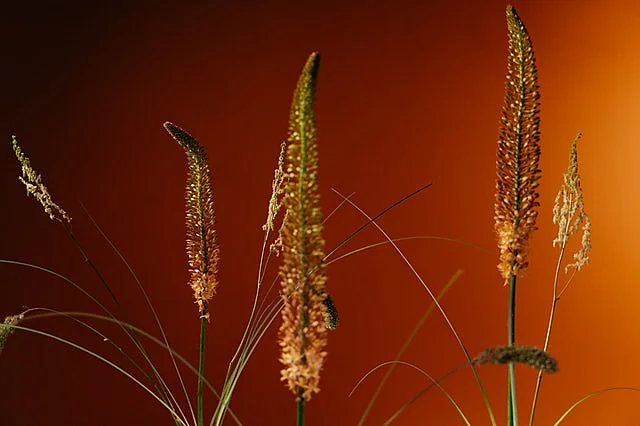Table of Contents
How To Care For Your Foxtail Fern
The foxtail fern is a beautiful evergreen plant that looks delightful in any garden or home. Do you want to know the best part too? The foxtail fern is notoriously hardy, so they’re not too difficult to look after.
If, of course, you know what to do. Below is the ultimate guide for caring for your foxtail fern, to keep it happy and healthy year round!
What does your foxtail fern require?
This section will deal with the basics; the things that your foxtail fern needs just to survive. We’ll cover light, temperature, soil, and humidity, so you know exactly what you need to keep this glorious green plant alive.
Light
Foxtail ferns do best in partial sunlight. If planting outside, be sure to avoid the hottest areas of your garden where the sun is known to beat down directly. Somewhere that is covered in part by shade is perfect.
This plant can do well in a gentle morning sun, but if temperatures sore in the afternoon it will suffer. If you’re keeping your fern indoors, be sure to keep it in view of a window with plenty of light in the morning.
Temperature
This links in with the above point. This plant does not handle heat particularly well, or freezing temperatures below 24 degrees Fahrenheit.
Gentle warmth is fine, but it’s prone to heat stress in direct sunlight with hot temperatures, so be careful when planting outdoors and double check your plant pot’s position indoors.
If your local area is known for freezing temperatures over winter months, consider planting this fern in a pot that you can easily bring inside for winter before transporting it back outside once the frost has gone.
Soil
Generally speaking this plant favors slightly acidic soil, but as a rule it will do well in any soil that is particularly good at draining. Well draining soil is the key here, because foxtail ferns are prone to root rot if the soil is too dense and holds water a little too well.
Humidity
If growing indoors humidity is important, so be sure to place a humidifier in the same room as this plant for optimum conditions.
If outside, foxtail ferns can do quite well regardless of humidity, given that this generally changes regularly in an area, so no particular extra care is needed here.
How to water
Watering your plant is pretty simple, with no real process that needs to be strictly followed like with some more high maintenance plants.
That being said, there are a number of common pitfalls when watering this plant that you absolutely need to avoid in order to keep it alive.
This might be familiar to some of you already, but it’s worth taking a closer look at to make sure you aren’t putting your plant through any unnecessary stress:
- Use only enough water to moisten your soil about 6-8 inches down.
- Do not water again until top 3 inches are dry to the touch.
- This promotes the root network to expand so that it is less susceptible to drought.
- Over or underwatering this plant is the most common reason for it to die.
- Prone to drought after first planting – so check soil moistness regularly!
How to fertilize
This plant actually does very well from seasonal fertilizing. The foxtail will let you know when it is ready for fertilizing by the color of its leaves.
If they have turned a pale green or begun to yellow, then it is usually a good indication that it is time for fertilization. You can feed them monthly during growing season, but they won’t be in need of fertilization over the winter months.
Simply use a standard all purpose fertilizer like a balanced 10-10-10 plant food and this will be all it needs. Interestingly, the plants network of underground roots is capable of self-fertilizing when soil nutrients begin to run low.
This is good news for those people who may think of fertilizing their plants less often, but be sure to give it a helping hand during growing season, especially if its leaves have changed color.
Extra Tips for Foxtail Fern Care
The final section of this article on all things foxtail fern, will take you through the things you need to know to improve the quality of the plant, though admittedly, it isn’t essential for the plants survival.
If you’re interested in knowing the proper pest control, pruning, and propagation though, this is the section for you!
Pests and Diseases
Your foxtail fern will be effected by mites or fungal diseases such as powdery mildew. Though the foxtail generally does quite well, mites and fungal diseases are most common if problems do arise.
You’ll notice mite problems by one of the following symptoms:
- Yellowing or brown spotting on leaves.
- Dying leaves.
- Dusty substance on leaves.
- Webbing on the underside of leaves.
In order to stop this, simply wash your plants leaves with water; nothing else is usually required. If it does persist, a light pesticide is useful, though this is only usually reserved for the worst mite infestations.
Powdery mildew on your foxtail fern will make the leaves look as though they have been covered in flour. There is a quick fix though, so if you notice this don’t fret.
Simply mix a gallon of water with 4 tablespoons of apple cider vinegar. This keeps the solution to around 5% acidity, which is key to killing the fungus without harming your plant.
Pruning
As a hardy specimen, the foxtail can withstand regular pruning. Simply remove yellowing leaves for aesthetic reasons and to encourage new growth.
There is no particular time of year when this is best, just whenever you notice parts of the fern that could use a tidy up.
Propagation
It’s very easy to propagate a foxtail fern: simply take the ripe red berries that form after flowering and plant them.
They house the seeds for growing a new plant, so all the new plant needs then is for you to follow the care instructions throughout the rest of this guide to grow another healthy and happy foxtail fern!
This plant is both beautiful and easy to care for, what’s not to love?



